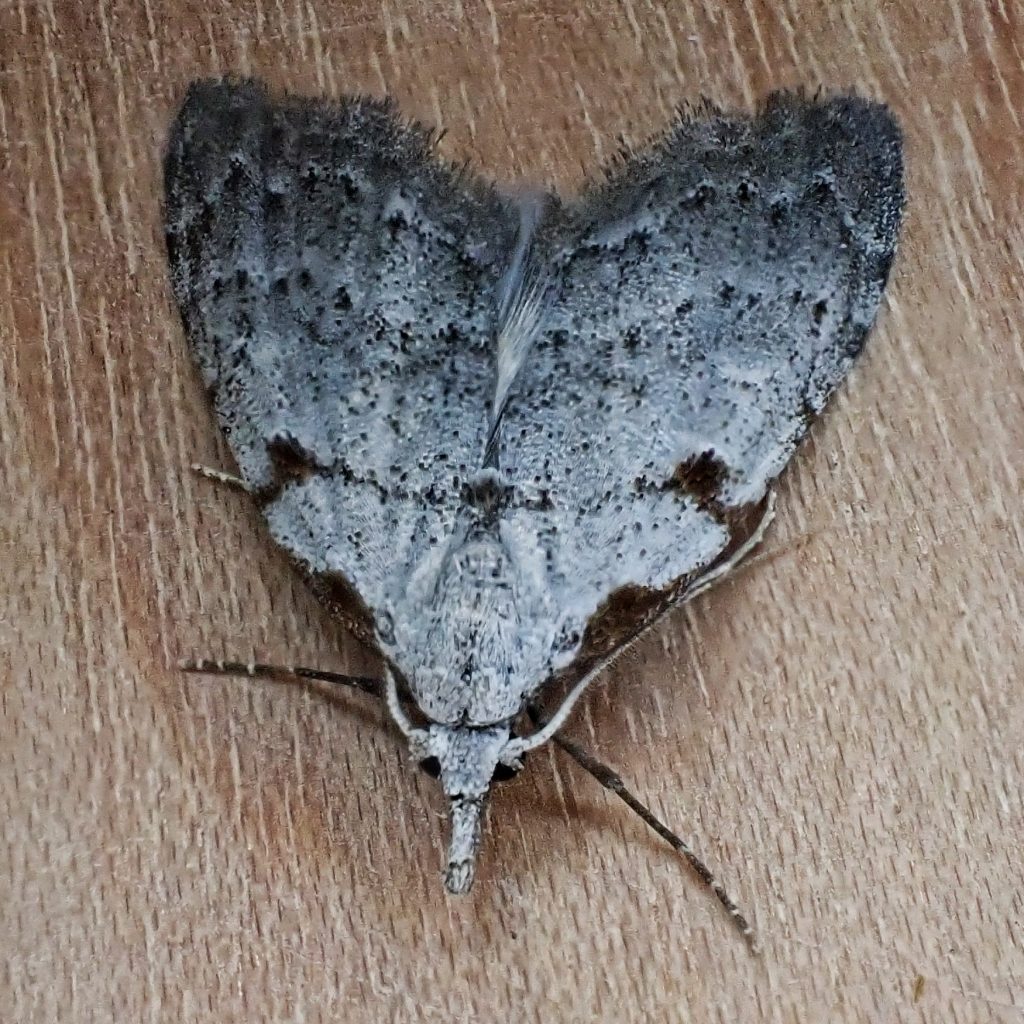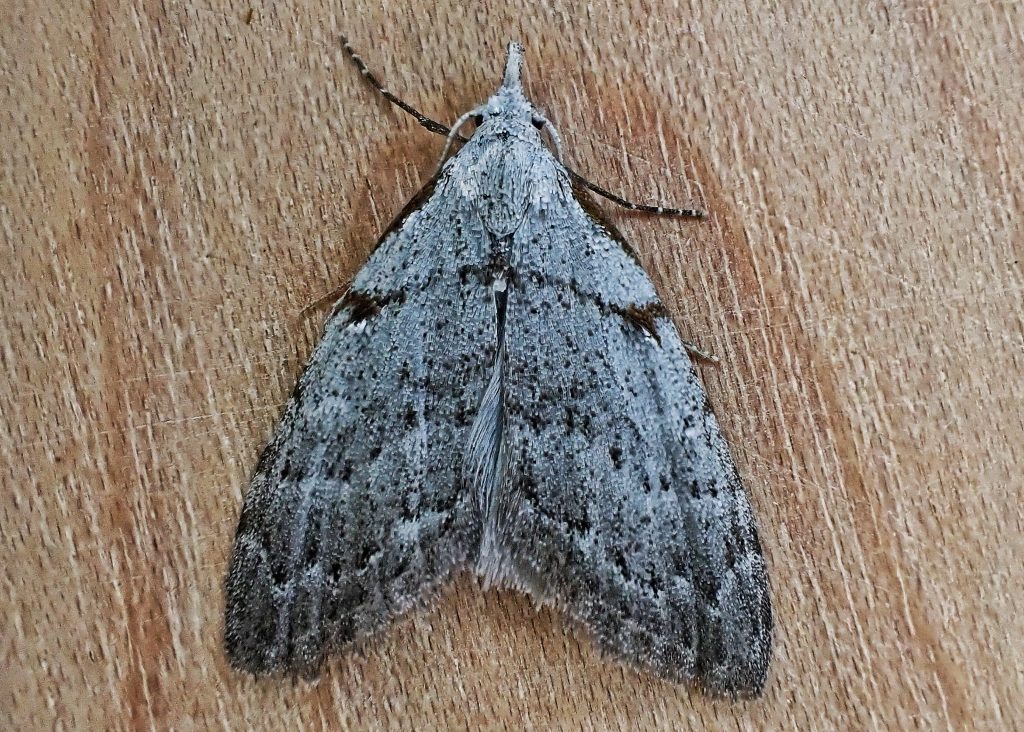
It turns out that I had photos of about 225 different species that I hadn’t profiled, although for many of those there were only a few photos. Still, there are probably 150 species that were well documented, but that I never got around to profiling. So, for awhile at least, I’ll be alternating organisms that were found last year with more recent ones, and of the older ones I’ll be trying to focus on ones that we will be seeing soon. This is much more in the nature of a cleanup exercise than having anything to do with a lack of things to find. I have barely scratched the surface of the numbers of leaf litter dwellers, mosses, lichens, fungi, etc. that are active or most easily found at this time of year. But if I’ve learned anything from my organization projects of the last several weeks (and I’m not claiming I have), it’s that I need to stay ahead of the game, or the backlog becomes overwhelming.
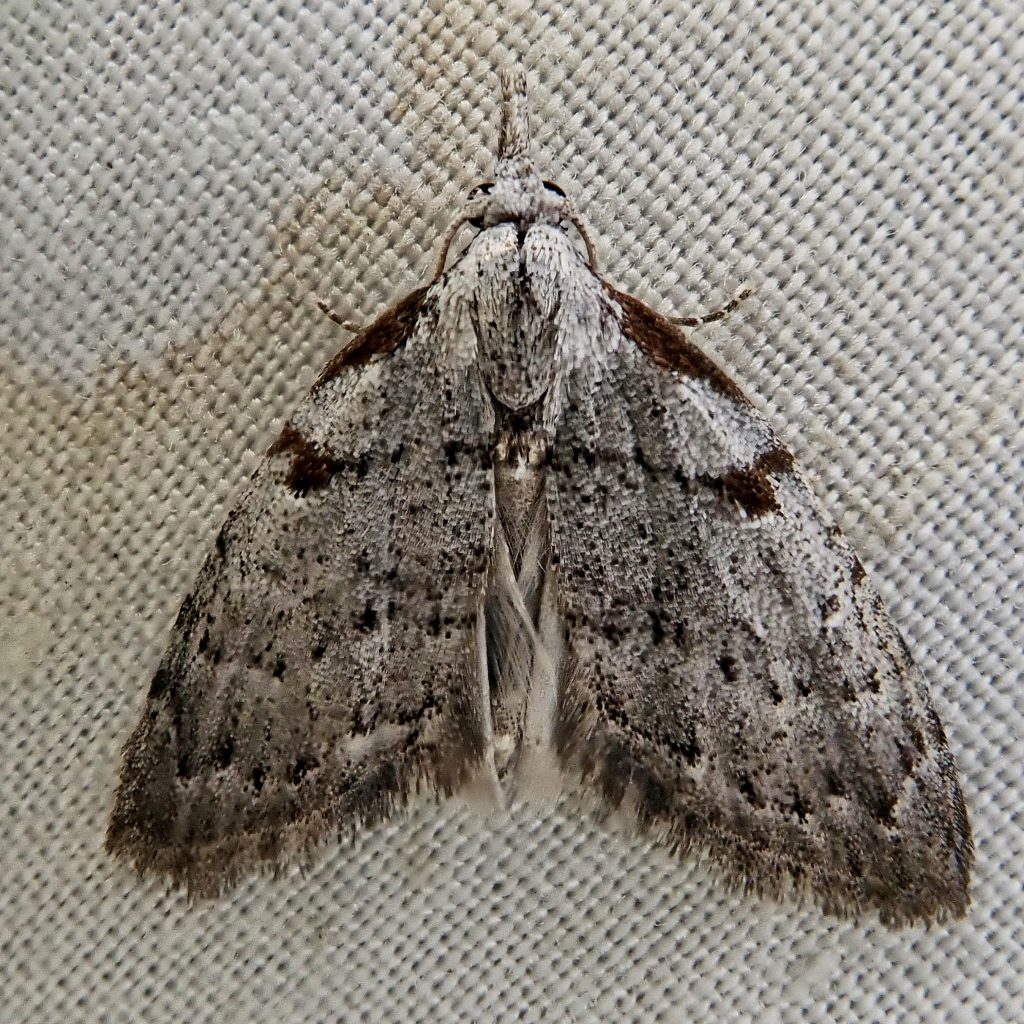
I found these handsome moths last April, but they can apparently be found from March to June. They are said to be common, but these were the first ones I’d found. They are in the family Nolidae, and are related to the Noctuid moths at the superfamily level. They are small for that superfamily, and don’t perch with their wings tented over the abdomen like most Noctuids. In fact I spent a bit of time looking for them in Crambidae because of the snout-like labial palps, until a lucky break sent me searching through Nolidae.
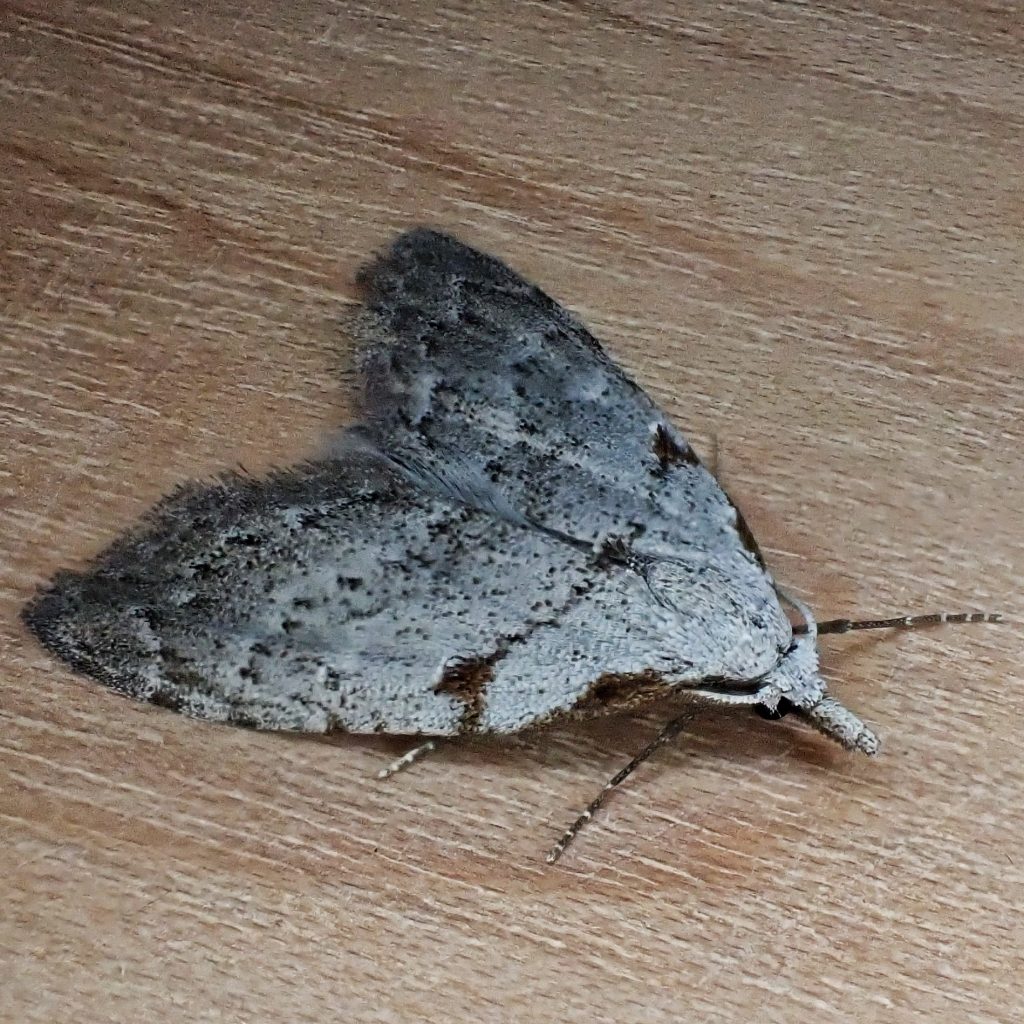
Description-Small (fw length 10-12mm) medium grey moth with 2 distinct dark marks on the basal costa; anterior antemedial line thins away from the costa, but continues to the inner margin; antemedial, medial, and postmedial lines are indistinct and intermittent, and the subterminal line is pale grey; forewings have a pointed apex; hindwings pale grey.
Similar species–Meganola miniscula is paler, anterior antemedial line doesn’t extend to inner margin, basal mark is larger and more diffuse; Aplocera plagiata has 3 full transverse lines, and even worn specimens have 3 marks at the costa.
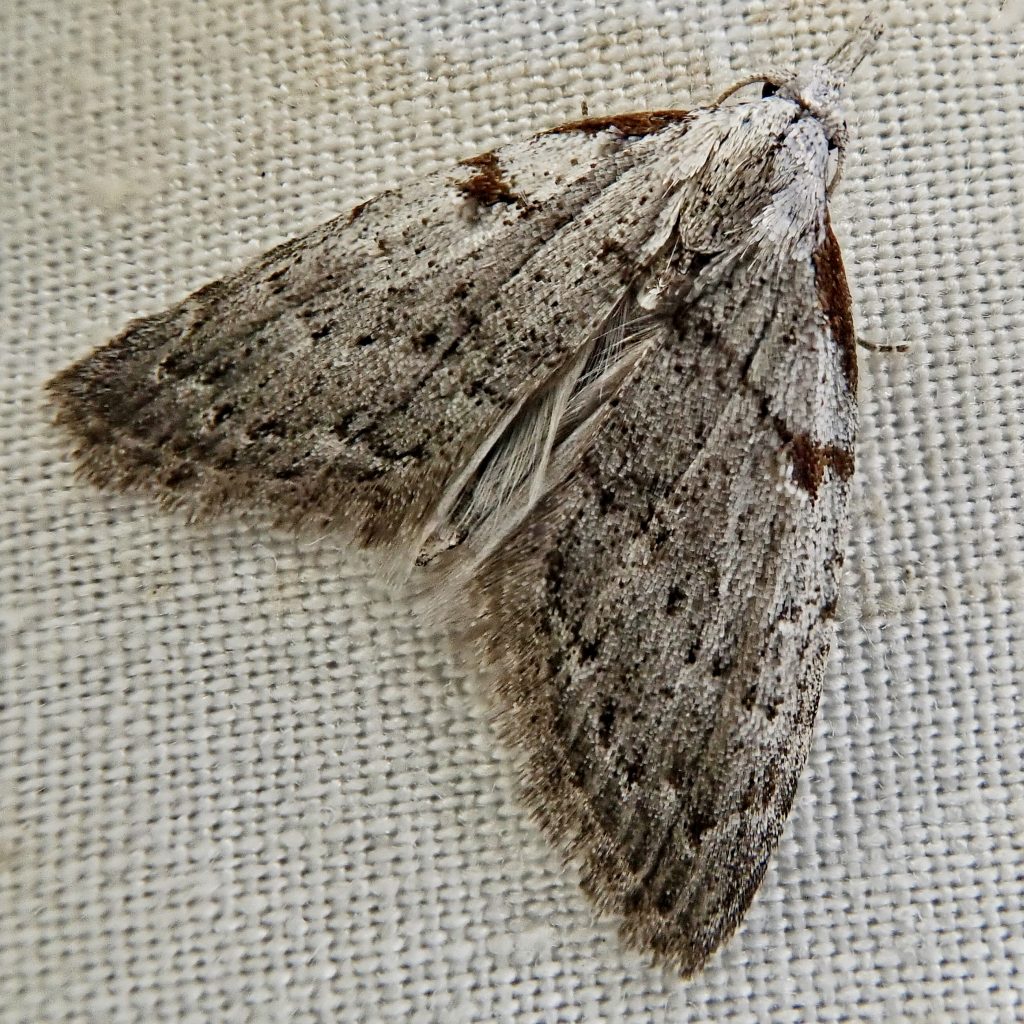
Habitat-Moist to mesic mixed forests and deciduous woodlands up to middle elevations.
Range-Native; West Coast northward to the Arctic; in our region found west of the Cascades and in sw Oregon and nw California, extending eastward to the Rockies in s BC and n Washington.
Eats-Larvae are found most often on Ceanothus in our region, but are also known to utilize alders, birch, oaks, and willows.
Eaten by-Probably preyed upon by insectivores of all classes.
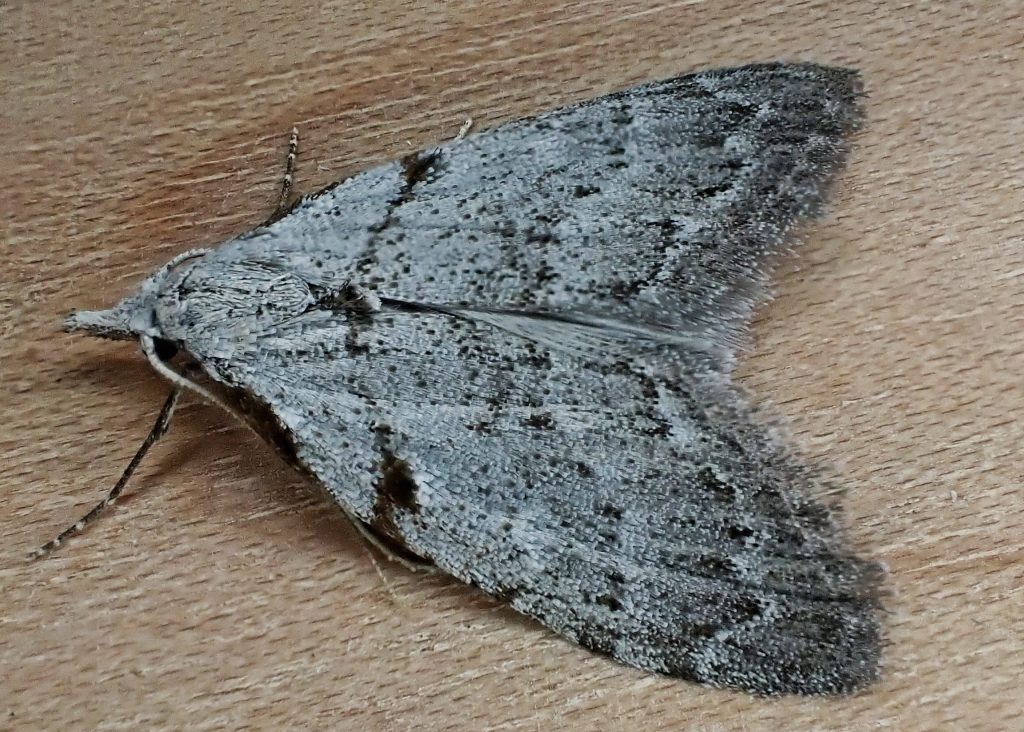
Adults active-Nocturnal; mid March to early June
Life cycle-Since adults fly in early spring it is assumed that they overwinter as pupae.
Etymology of names–Nola is believed to come from the town of Nola, in southern Italy, but it may come from the Latin word ‘nolo’, for ‘I refuse’, and indicate chastity, a reference to the white wings of the type species. But Leach gives no indication in his original description. I cannot find any information which suggests the meaning of the specific epithet minna, although it is a feminine Germanic name meaning ‘courtly love’, so it may honor a Minna of the descriptor’s acquaintance.
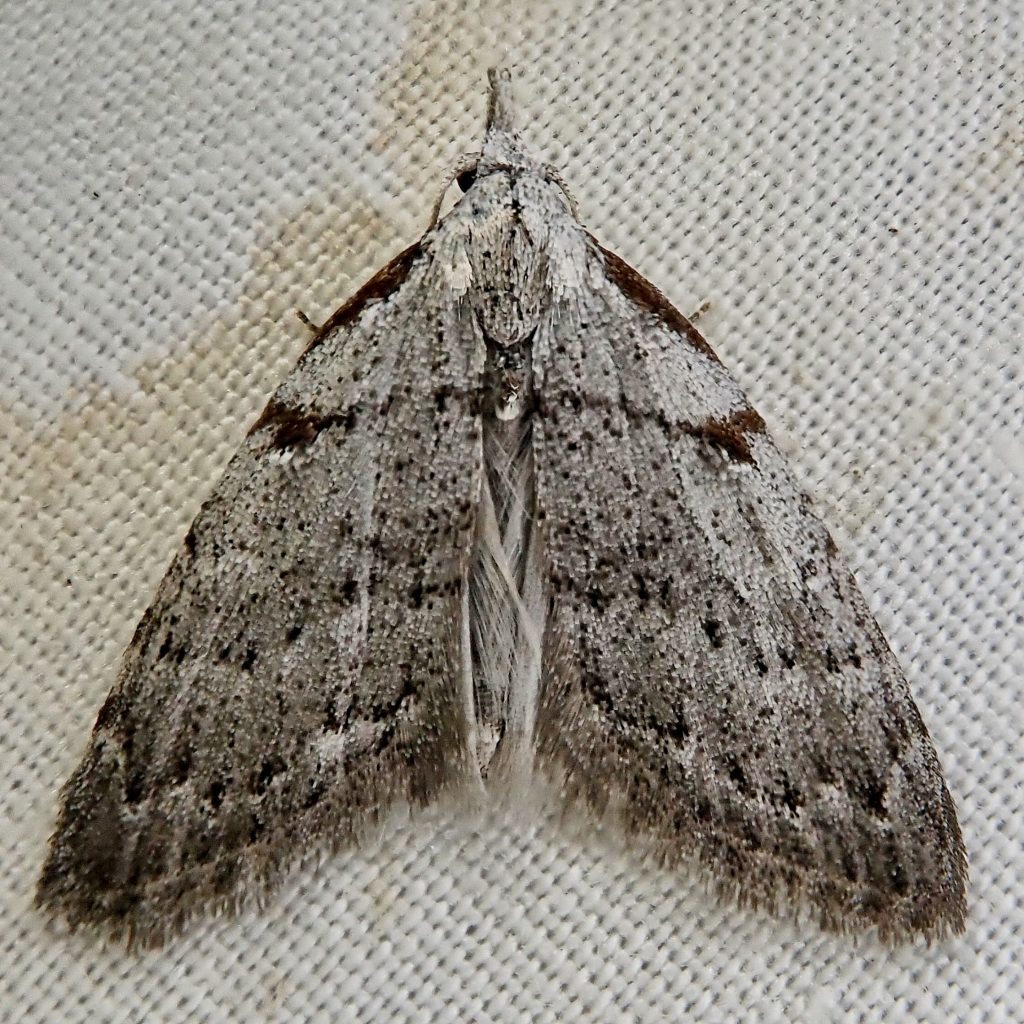
http://pnwmoths.biol.wwu.edu/browse/family-nolidae/subfamily-nolinae/nola/nola-minna/
https://bugguide.net/node/view/48885
http://mothphotographersgroup.msstate.edu/species.php?hodges=8993&state=PNW
